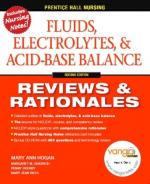|
This section contains 1,210 words (approx. 5 pages at 300 words per page) |

|
Acids and Bases
Summary: Details an experiment investigating the reactions of a typical acid (dilute hydrochloric acid) with metals, metal oxides, carbonates and bases. Concludes that acids and metal oxides form salt and hydrogen gas, while acids and carbonates form salts, water and carbon dioxide.
PURPOSE
To investigate the reactions of a typical acid (dilute hydrochloric acid) with metals, metal oxides, carbonates and bases.
APPARATUS
The following materials in order to complete this experiment:
- Dropper bottles containing 0.1M solutions of hydrochloric acid or limewater (calcium hydroxide) and sodium hydroxide.
- Dropper bottle of bromothymol blue indicator
- Small samples of the following metals: zinc, copper turnings, magnesium and iron
- Copper (II) oxide powder
- Magnesium oxide
- Marble chips (calcium carbonate)
- Sodium carbonate
- 12 test tubes and test tube holder
- Bunsen burner
- Stopper or cork
- Wax taper and matches
(a) REACTION WITH METALS
- Place a small piece of magnesium ribbon in a test tube and add about 2mL of dilute HCL.
- Stopper the test tube and allow the gas to accumulate.
- Remove stopper and test for the gas that evolved by holding a lighted taper to the mouth of the test tube.
- Repeat using zinc sample.
- Repeat...
|
This section contains 1,210 words (approx. 5 pages at 300 words per page) |

|


